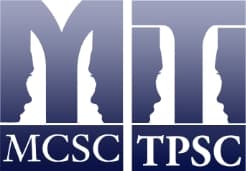Two decades ago, plastic surgeons who could produce the tightest facelift results were considered at the top of their game. That’s no longer the case, thanks to refined surgical techniques that enable surgeons to minimize the signs of aging in the lower face in a way that still appears natural. That’s the goal with my facelift patients in Mississauga and Toronto.
Not only do today’s facelifts look more natural, but they also produce less scarring and downtime. That’s an important advance because many people settle for nonsurgical facial rejuvenation treatments to avoid the invasiveness that they expect from a facelift. Instead of performing an invasive procedure that involves separating the large sheet of connective tissue that covers most of the middle and lower face from the underlying tissues and then lifting it up, I now do less invasive work.
Advanced facelift techniques involve small incisions that are well-concealed and detailed suturing that includes “placating”—folding the connective tissue of the face and then stitching it to itself. This technique significantly lifts sagging cheeks and hanging jowls, but with less trauma and therefore less bruising. It also minimizes the risk of damaging facial nerves.
In short, modern facelift surgeries focus on lifting and re-positioning the tissue and muscle below the skin, rather than simply pulling the skin tight. This produces enhanced results that appear natural.
Other Facelift Advances
Cosmetic surgery is a dynamic field, and we constantly seek ways to improve the experience and outcomes for patients. Some of the newer techniques I use for facelift patients include:
- Putting patients on a skincare regimen before the surgery. This improves skin quality and helps healing, leading to better results.
- Using fat grafting to during surgery to create more facial volume, which helps patients look more youthful. Facelifts address the issue of loose, sagging skin, but doesn’t help age-related volume loss.
- Applying topical ointments or creams after the surgery to promote healing and minimize scarring. I may also inject BOTOX® to enhance these efforts.
As you can see, many of the techniques don’t involve the surgery itself. Creating shorter, more comfortable recoveries and minimizing scars has been the focus of researchers for many years, not only for facelift procedures, but all cosmetic surgeries. Between the increased range of nonsurgical aesthetic treatments and improved surgical techniques, it’s truly an exciting and satisfying time to be a plastic surgeon.
If you’re concerned that you look older than you feel and want to know if you can benefit from a facelift, contact us using the online form to request a consultation. You can also call us at either (416) 207-9090 (Toronto) or (905) 273-3045 (Mississauga) to schedule an appointment.


Leave a Reply